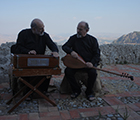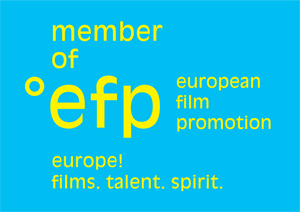The Enchanted Island (Film) (L'isola incantata)
by Pasquale Scimeca
original title:
L'isola incantata
directed by:
cast:
screenplay:
cinematography:
editing:
set design:
costume design:
producer:
production:
Arbash Società Cooperativa, with the support of Sicilia Film Commission
distribution:
country:
Italy
year:
2021
film run:
95'
format:
colour
festivals & awards:
- Vittoria Peace Film Fest 2021
Sicily is the protagonist of the story narrated in this film. An island that has always been a crossroads of multiple civilizations, a junction point between the West, the East and the African continent.
The tale begins during the time of Frederick II, when the three great monotheistic religions: Christians, Muslims and Jews, lived together on the island.
Each of these communities lived more or less in peace with each other. They had their own churches, mosques and synagogues. The collaboration and tolerance that characterized these three cultures, had revitalized the island's economy, making it prosperous and flourishing.
Frederick II was the synthesis of everything. He enclosed and preserved in his person all the cultures of his people; he spoke its languages, he wore its clothes, he lived in its buildings. He surrounded his court with poets, artists, craftsmen, geographers and philosophers, belonging to the three religions.
His death left a void behind that lasted for centuries, during which the church forgot the teachings of the gospel. In 1492, Queen Isabella of Spain and her husband King Ferdinand (Sicily, at that time was part of their kingdoms), in the name of an improbable "blood purity", and on the advice of the great inquisitor Torquemada, issued a villainous edict which persecuted all Muslims and Jews.
The consequences of this edict had a harmful effect on the culture and the economy of the island, which was deprived of its lifeblood: industries and commerce collapsed, giving rise to a period of plagues, famines, wars and persecutions.
The story paced by music continues in the Age of Enlightenment, when Garibaldi landed in Marsala, when the first peasant struggles for the land took place. The tale goes on with the world wars, the epic migrations and it ends, like a symbolic circle, with a cry of despair and hope.
The facts that are happening in our time, bring us right back to the starting point. Our cities have returned to be inhabited by men and women of the most diverse cultures and religions. As then, today there are new Torquemadas who are still claiming the implausible "blood purity”, that we moderns define as racists. They would like to chase people away and bring us back to the dark times of intolerance, generating mourning, destruction and death, which tear consciences and makes us, willingly or unwillingly, poorer and meaner.
DIRECTOR'S NOTES:
How to tell a thousand-year history in the time span of a film? How to tell facts and misdeeds of different cultures and religions that have affected (and continue to interest) the island where I was born and where I still feel to belong?
In order to be made, this film needed a particular look, a story line that has its roots in the popular tradition of the "storyteller".
The storytellers, whose origins are lost in the mists of time, used the same metaphors that have later given rise to the language of cinema. The billboard where the scenes were drawn resembles the frames in which the images of the film flow. The music (the storyteller played the guitar and alternated the tale with a song) emphasises and highlights the drama of the story and the actors’ emotions (the storyteller interpreted his characters and their feelings as actors do in the movies).
In this film, the figure of the storyteller is replaced by the musicians who have composed the soundtrack of the movie. Alfio Antico, The Mancuso Brothers, Miriam Meghnagi, the Agricantus and Franco Battiato. The choice of the musicians is also linked with their artistic personalities. Although they have their roots in popular music, they have been able to evolve and search a modern taste, through contaminations ranging from Arabic to Jewish and African music.
The visual part is composed mainly by pieces of films that I directed during my career, combined with new shootings, especially in the parts concerning the presence on stage of the musicians.
The film begins with Frederick’s death and it ends today.
As fate decided, or the circular course of history, our time takes us back to the starting point, to the coexistence of different cultures and religions, jeopardised by some new Torquemada.






